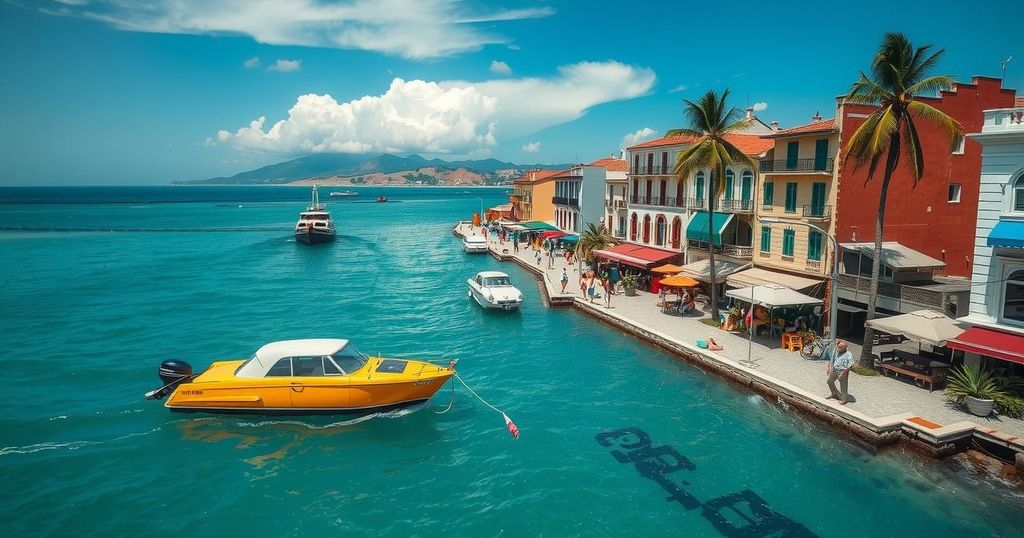Cuba’s Tourism Crisis: Decline in Visitors from Key Markets Amid Challenges

Cuba’s tourism faces a dramatic drop in visitors from key markets, with North American arrivals plummeting from over 452,000 in 2019 to under 118,000 in 2024. The economic crisis, poor infrastructure, and competition from other destinations are primary causes. Conversely, there are slight increases in tourists from Portugal and Russia. The Cuban government must take significant steps to revitalize its tourism sector.
Cuba’s tourism sector is experiencing a pronounced decline in international visitors, particularly from North America, Spain, Germany, Mexico, Argentina, and Colombia. Notably, data reveals that visitors from North America have decreased dramatically from 452,835 in 2019 to a mere 118,038 in 2024, reflecting a staggering drop of 73.93%. European nations such as Spain and Germany have similarly reported declining tourist numbers. Conversely, there is a modest uptick in arrivals from Portugal and Russia, perhaps suggesting potential shifts in demographic engagement. The downturn can be attributed to numerous challenges, including economic instability, insufficient infrastructure, and heightened competition from Caribbean hotspots like Cancun and Punta Cana. Meanwhile, from January to October 2024, Cuba observed an alarming overall decline of 48.23% in tourist arrivals compared to figures from 2019, exacerbating an already critical situation in its tourism-driven economy.
In 2019, tourism revenues were reported at USD 3,185 million, which accounted for a significant portion of Cuba’s economic stability. However, by 2023, this revenue plummeted to USD 1,216 million, marking a 61.82% decline. The loss of North American tourists is particularly alarming, as this demographic has traditionally formed a substantial base for tourism, significantly impacting local businesses and the economy at large. Furthermore, the dwindling number of visits from the Cuban diaspora has compounded these issues, with many choosing to vacation in other Caribbean destinations rather than returning to Cuba.
A significant part of the problem stems from the mismanagement of resources by Grupo de Administración Empresarial S.A. (GAESA), which oversees many of Cuba’s economic activities. Despite substantial investments totaling USD 24 billion in tourism infrastructure over the years, there has been a consistent failure to meet tourism targets, including a current goal of attracting 3.5 million tourists in 2024. Cuba’s energy sector is in disarray, plagued by frequent power outages, a healthcare system in crisis, and escalating crime rates, all of which deter potential visitors. Compounding these challenges, key airlines and tour operators have withdrawn their services, limiting accessibility for international tourists.
Amid these difficulties, Cuba faces stiff competition from other tropical locales that provide superior amenities and safety, leading to further attrition of tourism numbers. The Cuban government is attempting to combat these trends by promoting emigration as a means to boost remittances and entice exiled travelers; however, this strategy has yet to yield significant improvements, as many emigrants prefer vacations in the Dominican Republic or Mexico.
For Cuba to rejuvenate its tourism industry, it must confront these systemic issues head-on. This includes crucial investments in essential infrastructure, broadening its economic approach, and enhancing international relations to attract airlines and tourists alike. Although the obstacles are considerable, the potential for recovery remains substantial. A commitment to sustainable development and improved infrastructure will be vital for regaining the trust of international travelers. At this critical juncture, Cuba’s tourism sector stands on the precipice of transformation, urgently needing revitalization to restore its status as a favored Caribbean destination.
Cuba’s tourism sector has historically played a pivotal role in its economy, contributing significantly to revenue and local employment. However, various challenges have escalated over recent years, leading to a substantial decline in tourist arrivals from critical markets. Factors such as economic difficulties, underdeveloped infrastructure, geopolitical dynamics, and the rise of competing Caribbean destinations have led to a severe downturn in tourism. An understanding of these challenges is essential to grasp the current state of Cuba’s tourism and its future prospects.
In summary, Cuba’s tourism landscape faces a considerable decline, primarily due to reduced interest from traditional markets and systemic issues including economic instability and mismanaged infrastructure. While some slight increases from countries like Portugal and Russia offer hope, profound changes are necessary to revitalize this critical sector. With strategic investments and improvements in tourism-related infrastructure, Cuba may eventually overcome these challenges and recover its standing as a premier Caribbean destination.
Original Source: www.travelandtourworld.com








